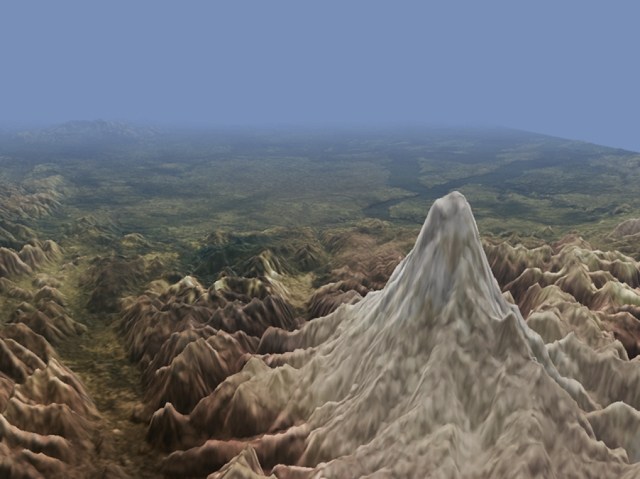 |

Submitted by , posted on 15 June 2003
|
 |

Image Description, by

This is a screenshot from one of my demos from my chapter in Jeff
Lander's upcoming Graphics Programming Methods, entitled "Building a Flexible Terrain Engine for the Future". The article covers my own take on Willem de Boer's geomipmapping, coverage of Thatcher Ulrich's Chunked-LOD algorithm (which is, essentially, an evolution of geomipmapping), and also detailed coverage (along with some kick-ass demos) of ROAM 2.0.
The screenshot shows off my geomipmapping implementation (using OpenGL along with SDL), which gets an average of about 120-140fps with 150k triangles on the screen (so, about a throughput of 18 million triangles per second), without taking any advantage of GL's new standardized vertex-buffer extension, or nVidia's VAR extension. Not too shabby, if I do say so myself. :)
And, while I'm plugging Graphics Programming Methods, I might as well
plug my book Focus on 3D Terrain Programming, and my upcoming
book about multiplatform 3D game programming (tentatively titled
Windows and Linux Game Programming). </SHAMELESS_PLUG>
Trent Polack
http://trent.codershq.com
|
|

